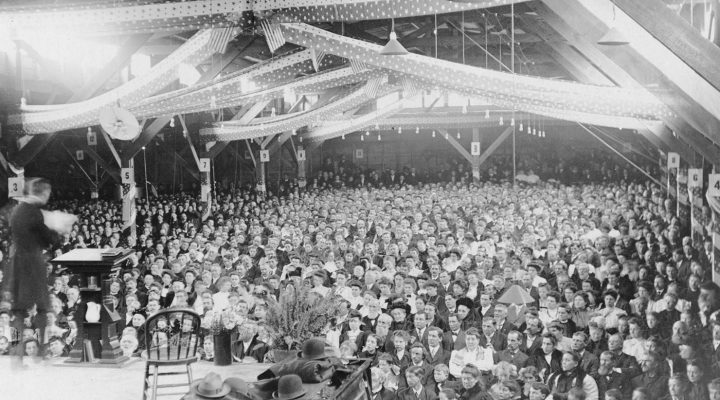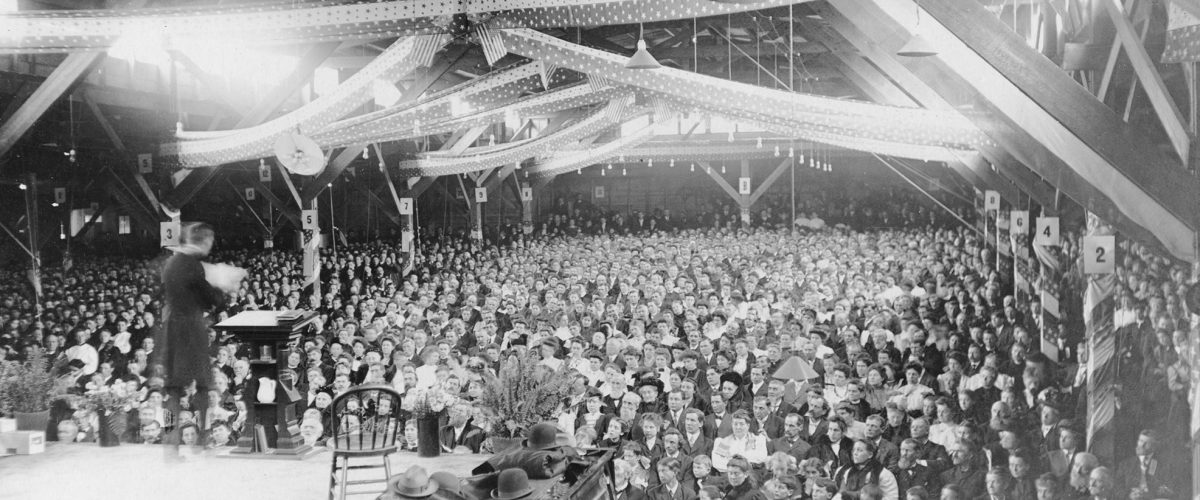In January 2015, seminarians in a 12-day January course on Appalachian religion sponsored by Wake Forest University Divinity School heard the “testimony” of a twenty-something Burnsville, N.C., resident named Adam who recounted a life of youthful “screw-ups” — cooking meth, drinking hard, driving fast — all brought to a cathartic end by a horrific pickup crash in which he and his friends were all spared from what should have been certain death.
Realizing the grace of that terrible moment, Adam says he “received Christ as his personal Savior” through a dramatic conversion, much to the delight of his Free Will Baptist mother who shouted God’s praises, he says, “all over the house.”

Bill Leonard
Adam calls it “a miracle of God” in a life made new. He now preaches at the county jail, where he knows he would have wound up but for the fact that none of his friends died in the wreck, and the judge, like Jesus, gave him a second chance.
Adam told the class he “got saved hard,” a conversion story so transforming that one seminarian observed: “Even the Presbyterian students were brought to tears!”
In his 1902 classic, Varieties of Religious Experience, Harvard professor William James writes:
To be converted, to be regenerated, to receive grace, to experience religion, to gain an assurance, are so many phrases which denote the process, gradual or sudden, by which a self hitherto divided and consciously … unhappy, becomes unified and consciously . . . happy, in consequence of its firmer hold upon religious realities. This at least is what conversion signifies in general terms, whether or not we believe that a direct divine operation is needed to bring such a moral change about.
Conversion, James believed, “consists of two parts: An uneasiness and its solution.”
Uneasiness means simply “that there is something wrong about us as we naturally stand.” Its solution involves “a sense that we are saved from the wrongness by making proper connection with the higher powers.”
Thus, religious experiences in general and conversion experiences in particular represent specific spiritual mechanisms for making a loving but transcendent God imminent in the lives of certain spiritually “uneasy” persons.
“Requiring a conversion experience of all who would claim membership in Christ’s church came rather late in Christian history.”
Requiring a conversion experience of all who would claim membership in Christ’s church came rather late in Christian history. While dramatic conversions were associated with the likes of the Apostle Paul, Augustine, Teresa of Avila, Julian of Norwich and Francis of Assisi, both Catholic and Orthodox Christianity guided sinners toward a “once-born” encounter with God, nurtured through the sacramental “outward and visible signs of an inward and spiritual grace.”
With the Reformation, certain segments of the church — Anabaptist, Puritan, Moravian, Baptist — required a profession of faith from all who claimed membership.
Yale historian Sydney Ahlstrom notes that for early English Puritans, “a specific conversion experience was at first rarely regarded as normative or necessary,” although it might well serve as assurance that election had been received. Gradually, however, often out of pastoral care for those seeking full assurance, “these Nonconforming Puritans in the Church of England came increasingly to regard a specific experience of regeneration as an essential sign of (divine) election.”
The “English Declaration from Amsterdam” (1611), a confession of faith composed by the founders of the earliest Baptist congregation (1609), states:
That the church of Christ is a company of faithful people, separated from the world by the word & Spirit of God being knit unto the Lord & one another, by baptism, upon their own confession of faith & sins.”
Before baptism was granted, early Baptists required converts to publicly declare their experience of God’s grace after which it was voted upon by the congregation as to its authenticity. If the vote failed, the sinner was sent back to Jesus. Individual conversion had communal implications.
The spiritual awakenings and revivals of the 18th and 19th centuries helped make conversion normative in many Protestant contexts.
“The spiritual awakenings and revivals of the 18th and 19th centuries helped make conversion normative in many Protestant contexts.”
The Cane Ridge camp meeting (1801) brought at least 10,000 people together on the Kentucky frontier, solidifying conversion as evidenced in certain external “exercises” that marked an inner transformation — running, weeping, laughing, dancing, even falling into catatonic states on their way to grace. As always, controversy accompanied redemption. The cynics observed that nine months after the revival ended there were more babies delivered than souls saved. Others were suspicious of conversionist manifestations. Barton W. Stone, leader of that revival, acknowledged:
The sticklers of orthodoxy amongst us writhed under these (revival) doctrines, but seeing their mighty effects on the people, they winked at the errors, and through fear, or other motives, they did not at first vehemently oppose us. They painfully saw their Confession of Faith neglected in the daily ministration by the preachers of the revival and murmured at the neglect.
Camp meetings and seasonal revivals became increasingly normative vehicles for “drawing in the net” of new converts. Yet while colonial Calvinists and frontier revivalists agonized over salvation, 19th and 20th century evangelists like Dwight L. Moody and Billy Graham shortened the conversion process, inviting sinners to “come forward” at mass revival crusades, pray the “sinner’s prayer” and get saved.
In their effort to make conversion short and simple enough for the masses and the media, many evangelicals, knowingly or unknowingly, turned it into another product to be consumed by a populace enticed by the promise of instant salvific gratification.
As early as 1982, Richard Quebedeaux linked the “installment buying” by which American consumers secure immediate material wants to the “easy grace” by which American Christians gain conversion. That same year, Samuel Hill and Dennis Owen concluded of that immediate conversion moment: “It is as if we have produced consumers of the born-again movement, frozen in the hour they first believed.”
Forty years later, Christian conversions, like church attendance, is on the numerical decline, denominationally from Southern Baptists to Mormons. In the American public square, professing Christians across the spectrum often seem a long way from such fruits of the Spirit as “love, joy, peace, patience, kindness, goodness, faithfulness, gentleness, self-control.”
Let us resist conversion as a Jesus vaccination, a salvific transaction that secures, once and for all, spiritual security in this world and the next. Conversion to Christ, however it begins, is a lifetime continuum of faith.
The words of the late William Sloane Coffin capture the moment:
What is faith? Faith is being grasped by the power of love. Faith is recognizing that what makes God is infinite mercy, not infinite control; not power, but love unending. Faith is recognizing that if at Christmas Jesus became like us, it was so that we might become more like him. We know what that means: watching Jesus heal the sick, empower the poor and scorn the powerful, we see transparently the power of God at work.
Grasped by the power of love? Why, that’s enough to bring even the Baptists to tears!
Bill Leonard is founding dean and the James and Marilyn Dunn professor of Baptist studies and church history emeritus at Wake Forest University School of Divinity in Winston-Salem, N.C. He is the author or editor of 25 books. A native Texan, he lives in Winston-Salem with his wife, Candyce, and their daughter, Stephanie.
Related articles:
If revivalism isn’t part of your spiritual experience, you’re not defective | Opinion by Eric Folkerth
Samuel Hill was prophetic in 1966 when he predicted Southern churches in crisis | Opinion by Bill Leonard


